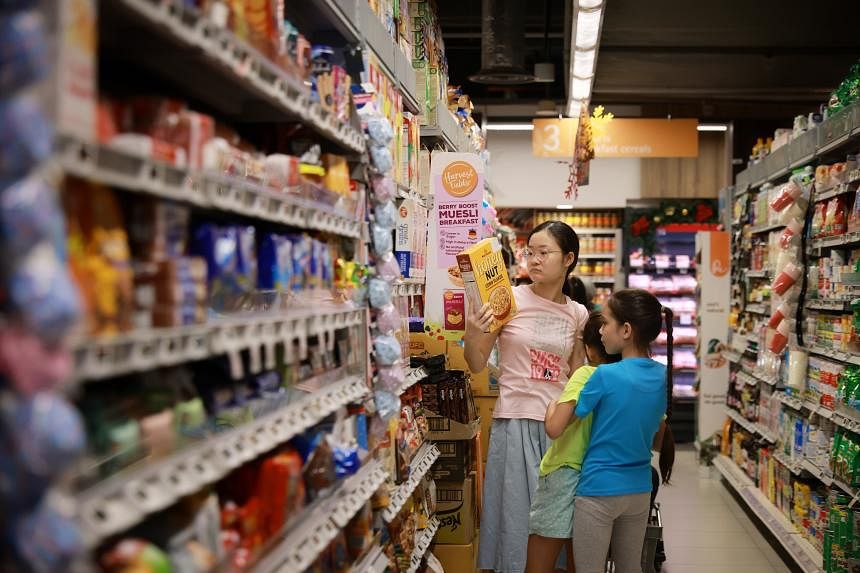SINGAPORE – Inflation is typically defined as a generalised and sustained increase in prices across the economy, but prices rarely change evenly across all goods and services at the same time, or affect everyone in the same way.
To an average person, news that inflation is at its highest level in 14 years, as measured by the consumer price index (CPI), only conveys the sense that prices are rising at a fast pace. How aggregate measures of inflation, such as the CPI, affect your household or personal expenses is a different story.
People’s experiences with rising prices depend on how much they earn and how they spend.
Years of academic work have proven one fact beyond doubt – high-income families feel less of an impact from inflation than low-income ones. This is because higher-income households spend a smaller portion of their total income on necessities.
High earners would use their cars or book a cab ride even for short distances. They dine out more frequently at expensive Michelin-starred restaurants, take part in outdoor recreational activities more often and shop at high-end outlets, ending up spending more money on things that are nice to have, but not essential.
Hence, high-income households have more flexibility to modify their shopping habits and squeeze their budgets without a major impact on their lifestyles to tide them over inflationary spirals. If prices get too high, they can cut back on expenses that are not essential.
By contrast, low-income families spend nearly a third of their income on necessities such as food, transportation, utilities and telecoms services. Thus, they end up paying for these essentials even if prices go up.
High-income families can also switch to buying cheaper versions of expensive items when prices are on the rise. On the other hand, low-income families would already be buying the cheaper items to begin with.
For instance, high earners usually live in affluent neighbourhoods, dotted with pricier shops, restaurants and shopping malls. In times of high inflation, they can choose to buy at least some items from the nearest wet markets frequented by low-income families.
As a result, the inflation for high earners’ shopping baskets is lower than the inflation for the shopping baskets of lower-income households.
Inflation hurts low earners disproportionately, even in times when incomes are on the rise across the board.
A DBS Bank study that covered the period from May 2021 to May 2022, and was based on the bank’s clients, showed how.
It found that while the economic recovery from the 2020 recession brought about an increase in wages, the spike in inflation during the period essentially meant that 40 per cent of customers suffered a decline in their real income – the change in income adjusted for inflation.
But the worst hit were those earning below $2,500 a month. They registered 2.5 per cent income growth in the period of May 2021-22, less than the headline inflation of 5.6 per cent reported at the end of that period. The other income groups saw at least 8 per cent growth in their income.
Looking at the same issue another way, the study showed that while monthly expenses grew twice as fast as income across DBS’ customer base, the low earners saw their spending growing significantly faster than their incomes.
For customers earning less than $2,500, expenses grew by 13.8 per cent, which was 5.6 times the rate of their income growth. On the other side of the income spectrum, expenses for high earners – those making $10,000 or more – rose only 1.8 times versus their income growth.
Total expenses in the study referred to the sum of housing, food, transportation, healthcare, insurance, education, shopping, entertainment and travel, and other expenses. Income was taken as the average take-home pay.
That is why even as central banks try to keep inflation at bay for the overall economy, governments step in with fiscal support to help low-income households.
The Singapore Government has announced at least two more rounds of support measures in June and October 2022, in addition to the Household Support Package in Budget 2022, to fully cover the effect of rising prices for lower-income and retiree households, on average.
For middle-income households, on average, the government support provided will offset more than half of the inflation-driven increases in the cost of living this year.
The latest $1.5 billion package announced in October includes a Cost-of-Living special payment for 2.5 million eligible adult Singaporeans, additional Community Development Council vouchers for every Singaporean household, public transport subsidies and vouchers, as well as enhancements to the Education Ministry’s financial assistance schemes for primary to degree students in schools and publicly funded post-secondary education institutions.
These come on top of a separate cash payout announced in Budget 2022 to help cushion the impact of the upcoming GST increase, under the Assurance Package. The cash payouts and other schemes under the Assurance Package will be disbursed over five years from 2022 to 2026 and are meant to offset additional GST expenses for the majority of Singaporean households for at least five years and, for lower-income households, around 10 years.
How far has the Singapore dollar’s purchasing power declined in the face of inflation?
Generally speaking, inflation erodes the purchasing power of consumers over time as they require more money to buy the same amount of goods. For instance, if a kilogram of apples costing $5 in January is now being sold at $6, one can assume that the purchasing power of those holding Singapore dollars has dropped by $1.
But in a globalised world where almost every other thing available in the market is either shipped from another country or is manufactured with at least some imported parts and components, the impact of inflation alone is not enough to determine the purchasing power of a currency.
Hence, economists measure purchasing power using complex methods that describe the strength of a currency relative to a basket of other currencies, usually those of its trading partners.
Those measures for purchasing power are even more important in Singapore’s context, as virtually everything consumed here is imported. Even products that are manufactured here have a large component of imported raw materials and parts.
And that is why the central bank – the Monetary Authority of Singapore (MAS) – uses the local dollar as the main tool to maintain price stability across the economy.
For instance, the Singapore dollar has depreciated by 1.8 per cent against the US dollar since the beginning of 2022. It was in fact much weaker a few months earlier. In late September, the Singdollar was down around 6 per cent to the greenback.
At the same time, the Singdollar has appreciated against most other currencies. It is up 18.8 per cent against the Japanese yen, 10.36 per cent against the Chinese renminbi and 5.95 per cent against the Malaysian ringgit so far in 2022.
So on a nominal basis, it has been one of the few most resilient currencies worldwide.
The strength of the currency cannot absorb all the price increases but can certainly retain the purchasing power of Singaporeans to a large extent.
Analysts estimate that the Singdollar’s trade-weighted value – referred to by economists as the nominal effective exchange rate (NEER) – has strengthened by 5.7 per cent in the 12 months from October 2021, when the MAS started to tighten monetary policy.
In the same period, the Singdollar’s NEER also appreciated by a cumulative 8.9 per cent against the currencies of all its trade partners except the US dollar and the Hong Kong dollar, which is pegged to the greenback.


